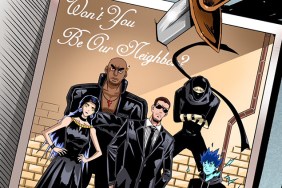Photo: Monica with arrow
In the afterword of Tones of Dirt and Bone (Twin Palms), photographer Mike Brodie describes a moment so completely, it is easy to forget these are only words: “My first memory was when I was one year old. Imagine that? Lying by a river bed. Arizona is hot in the summer, and even worse when you have an earache. No pants on, screaming and crying like it would help or something, my face bright RED. The blanket I was lying on made of prickly pear green wool. If that cloth was still around it would tell you a story. But it’s long gone, underground somewhere, tired.”

Kris Repuchi. Philadelphia, Pennsylvania.
Brodie’s words beautifully conjure an image in the mind’s eye that looks just like his photographs: coarse, vulnerable, and exposed to the elements, full of raw emotion and pure energy. The colors are both sharp and dull, the light bright, the dark murky, evoking a feeling of the undertow. The photographs in Tones of Dirt and Bone were made between 2004 and 2006 while Brodie traveled throughout the United States. They were taken with a Polaroid camera and Time Zero film, using a distinct color palette that evokes memories of late twentieth-century America in all its analog glory.
Also: CraveOnline Book Reviews
There was a time when Polaroid was on the cutting edge, when it as the only option for an instant photograph. It was expensive but for the sheer pleasure and glorious peculiarities of the film, it was more than worth it. Today, this is just as, if not even more so, true. The Polaroid film comes ten sheets to a box, and as a result each photograph is extremely deliberate and precious.

Three days before Katrina. 3096 Rampart St., New Orleans, Louisiana
Born in 1985 in Arizona, Brodie first began photographing in 2004, when he was given a Polaroid camera and in the intervening years has created an incredible body of work made while hopping freight trains and hitchhiking across the United States. The photographs selected for Tones of Dirt and Bone are like an anthem of sorts, a howl, cry, and scream, and then a pause. Much in this same way, Brodie worked. He compulsively documented his explorations, and then he stopped. And what remains are the photographs, strong and enduring.

Brontez. San Francisco, California.
Today, Brodie lives in West Oakland, CA, with his wife , Celeste, and makes his living repairing machinery for the Peterson Tractor Company. In his free time he can be found in his shop fixing cars for the people in his neighborhood. Brodie writes, “Maybe I’ve just become obsessed with dirty cloth and dull rags, objects that have been touched by a million different hands then set back down—right there—just for me. Things that are made by chance or found on the side of the road, rather than bought or sold. What’s a story anyways? Why do people tell them?”

Four-wheeler accident.
Questions like this should be asked, over and over again for the answers are as varied and complicated as the people willing to answer them. Photographs, like the ones to be discovered in Tones of Dirt and Blood, are paths that take us beyond our current place, giving us the opportunity to look, feel, and wonder: what’s it all about?
All photos: ©Mike Brodie, courtesy of Twin Palms Publishers
Miss Rosen is a New York-based writer, curator, and brand strategist. There is nothing she adores so much as photography and books. A small part of her wishes she had a proper library, like in the game of Clue. Then she could blaze and write soliloquies to her in and out of print loves.








